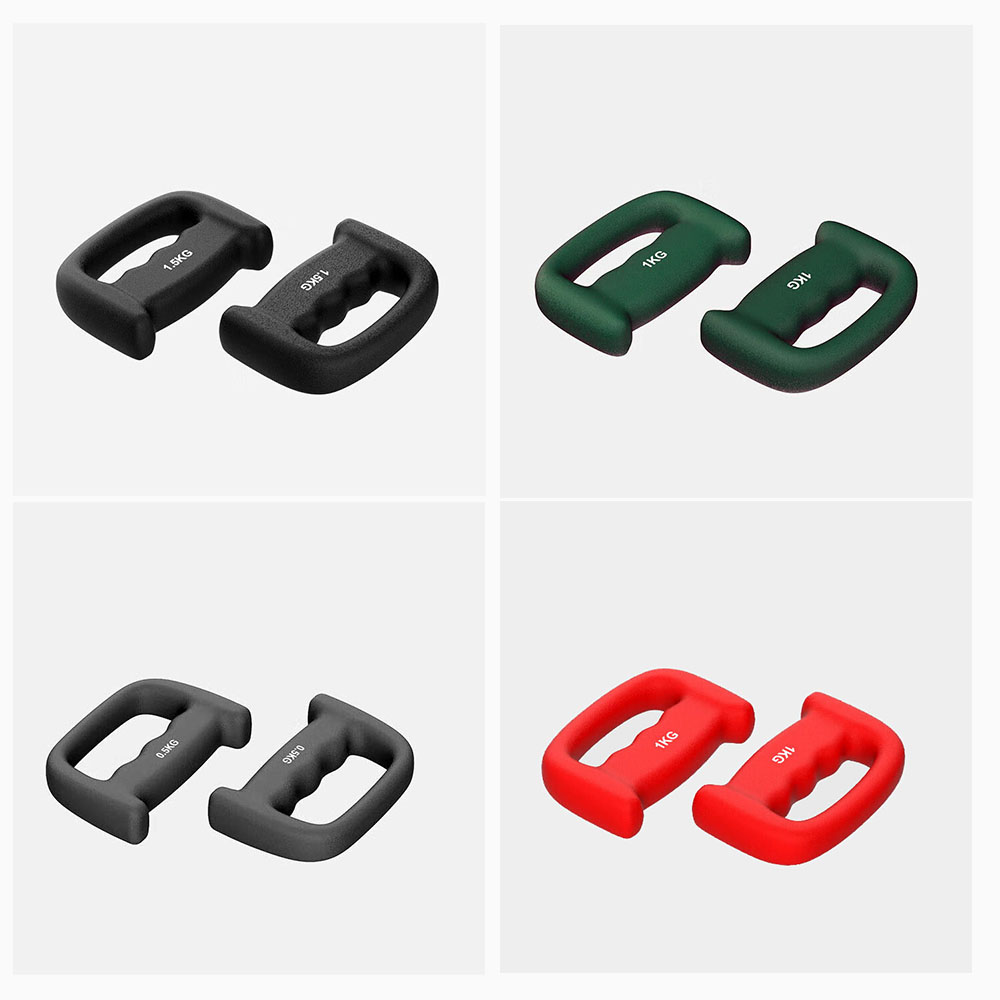VINYL and NEOPRENE COATED DUMBBELL XDB205

Item Code: XDB205
Weight Range: 0.5 / 0.75 / 1.0 / 1.5 / 2.0 KG
Material: PVC+ Iron
Colors: BLACK / GREY / RED / GREEN
Advantage:
Durable Vinyl and neoprene Coating
1, The dumbbells are coated with a high-quality vinyl layer, providing a non-slip, sweat-resistant grip. This ensures safety and comfort during intense workouts.
2, The soft yet sturdy coating protects floors and reduces noise, making them ideal for home gyms or group fitness settings.
Ergonomic D-Shaped Design
1, The flat "D-shaped" ends allow for a secure, natural grip, mimicking the hand position used in boxing or functional training.
2, This design enables dynamic movements, such as twists, presses, and holds, without straining the wrists.
3, They are perfect for high-repetition, fast-paced exercises common in cardio and boxing routines.
Functions
1, Mimic punching motions while adding resistance to build shoulder endurance, core stability, and punching power.
2, Use for shadowboxing drills, hook/uppercut simulations, or defensive maneuvers to improve coordination and speed.
3, Integrate seamlessly into aerobics, Zumba, or HIIT routines to elevate intensity. Their lightweight design allows for fluid arm movements, jumps, and rhythmic exercises without compromising form.
4, Enhance calorie burn by combining cardio with muscle engagement.
They bridge the gap between strength training and dynamic cardio, offering a hybrid tool for fitness enthusiasts, boxers, and aerobic instructors. Their adaptable design supports creativity in workouts while prioritizing safety and durability.
A Brief History of Dumbbells
The dumbbell, a cornerstone of strength training, traces its origins to ancient civilizations. Early prototypes emerged in India (around 1000 BCE) with stone or sand-filled devices called "nals", used for building warrior strength. Ancient Greeks later adopted halteres – crescent-shaped stone weights – for athletic training and to enhance long jumps in the Olympic Games.
During the Middle Ages, European knights used weighted wooden clubs for combat preparation. The term "dumbbell" itself appeared in 16th-century England, referring to silent church bell ropes repurposed for resistance exercises (hence "dumb" bells).
The Industrial Revolution revolutionized dumbbell design:
18th century: Cast-iron adjustable plates were introduced.
19th century: Standardized weights emerged, popularized by strongmen like Eugen Sandow.
20th century: Rubber-coated dumbbells reduced noise, while hexagonal designs prevented rolling.
Modern innovations include adjustable selectorized dumbbells (e.g., Bowflex) and smart dumbbells with app-connected tracking (2020s). From stone to AI, dumbbells remain a timeless tool for human physical empowerment.

